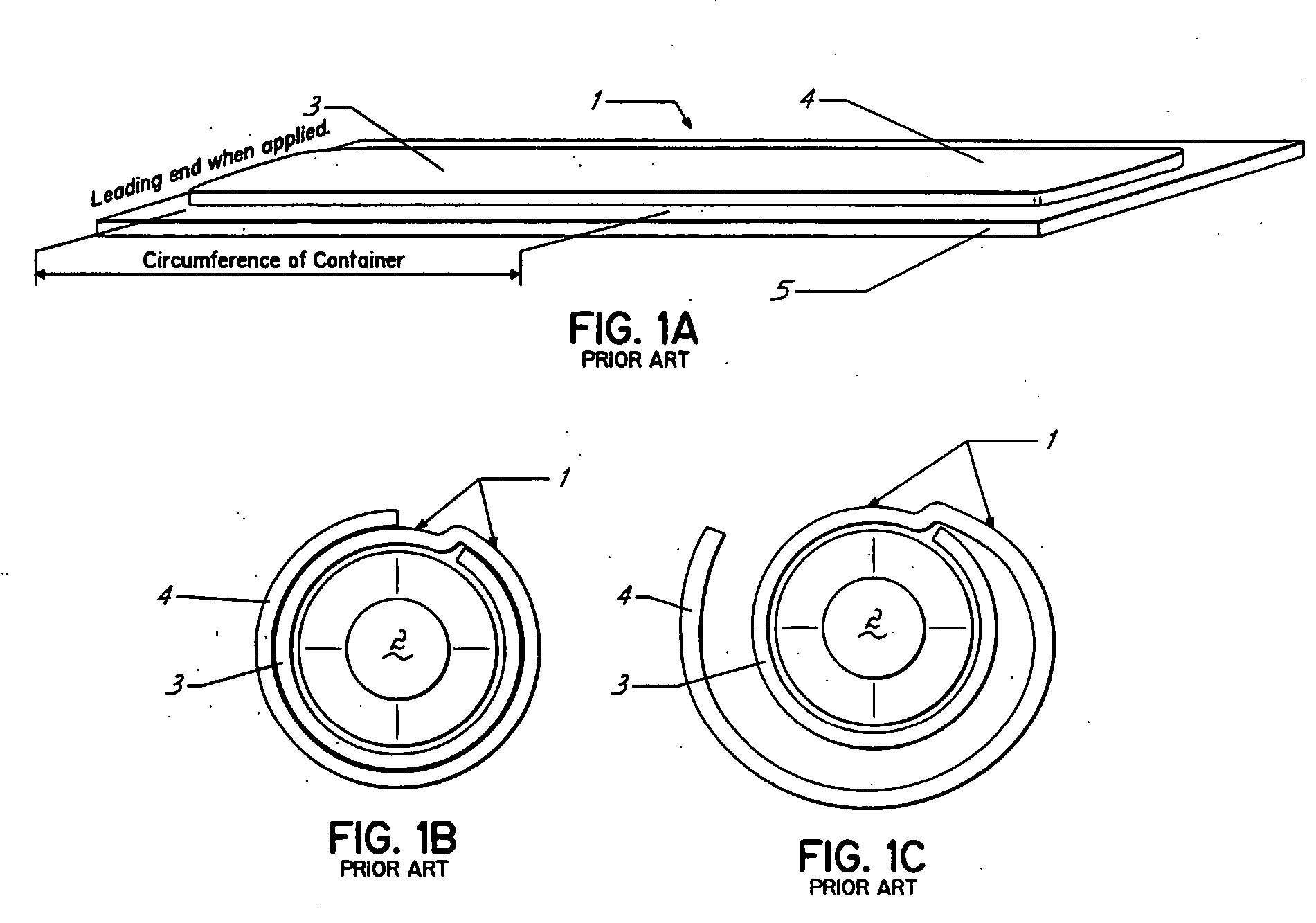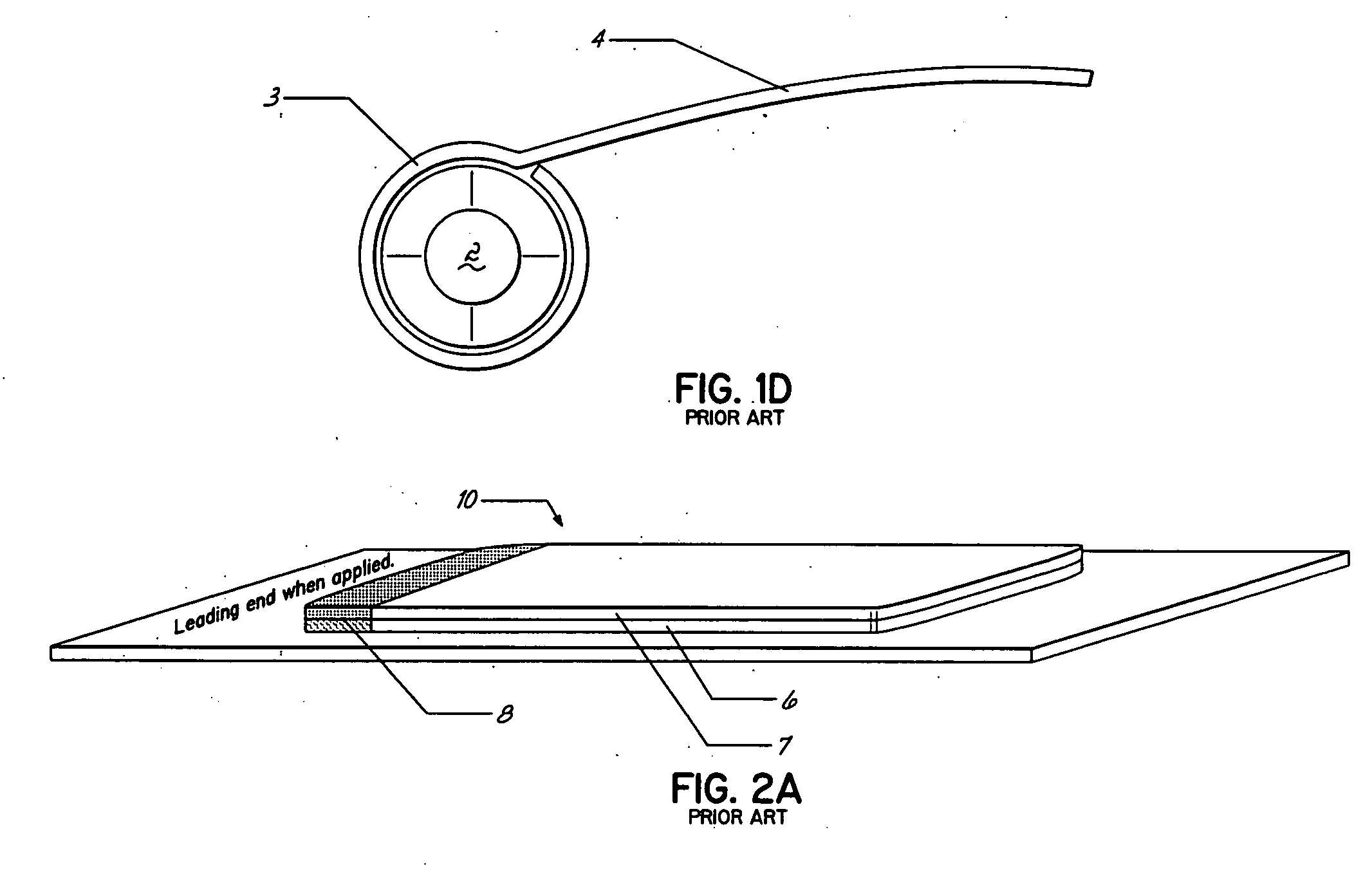Multi-ply wrap label
a label and multi-ply technology, applied in the field of labels, can solve the problems of increasing the chance of misalignment, buckling, or machine jamming during the application process, and the design of the prior art’s “wrap around” design has several limitations relating to machine application to containers, etc., to achieve the effect of shortening the length, less “flimsy” and improving press efficiencies
- Summary
- Abstract
- Description
- Claims
- Application Information
AI Technical Summary
Benefits of technology
Problems solved by technology
Method used
Image
Examples
first embodiment
[0073] With reference to FIGS. 3-8 and their counterparts, a label according a first embodiment of the present invention, generally denoted by the numeral 109, is shown therein. Label 109 includes a base ply 110, and an upper ply 111. A base ply leading end portion is shown as numeral 113 and an upper ply leading end portion is shown as numeral 114, each having a leading edge 113L and 114L respectively. The first embodiment has both said ply leading end portions being coextensive at their said leading edges prior to application.
[0074] The upper ply 111 is shown in FIGS. 3-5 as being longer than the base ply 110, although said upper ply could also be equal to or shorter than said base ply 110 as is illustrated in FIGS. 8a-8f.
[0075] Referring to FIGS. 5a-5b, which illustrate features of the label 109, base ply 110 is coated on its lower surface with a pressure sensitive adhesive 118 and the upper ply 111 is also coated with a pressure sensitive adhesive 119 on its lower surface. Lab...
second embodiment
[0093] With reference to FIGS. 9a-9d, a label according a second embodiment of the present invention, generally denoted by the numeral 209, is shown therein. Label 209 includes a base ply 210, and an upper ply 211. As in the first embodiment the entire length of the upper ply 211 could be longer than, equal to, or shorter than base ply 210.
[0094] Unlike the first embodiment, a feature of the second embodiment has the upper ply leading end portion 214 of label 209 as not being coextensive with the base ply leading end portion 213 prior to application. Specifically, all labels of the second embodiment feature the upper ply leading edge 214L extending forward, past the base ply leading edge 213L. As such, during machine application to a container such as a round bottle 2, the upper ply leading end portion 214 will become affixed to said bottle prior to the base ply 210 being affixed.
[0095] The end result, after application to the bottle 2, is that the end-splice 215 will be partially...
third embodiment
[0099] With reference to FIGS. 10a-10d, a label according a third embodiment of the present invention, generally denoted by the numeral 309, is shown therein. Label 309 includes a base ply 310, and an upper ply 311. As in the first and second embodiments the entire length of the upper ply 311 could be longer than, equal to, or shorter than base ply 310.
[0100] Unlike the first and second embodiments, the third embodiment features the upper ply leading edge 314L of label 309 as being recessed in relation to the base ply leading edge 313L prior to application as illustrated in FIG. 10a. As such, during machine application to a container such as a round bottle 2, the base ply 310 will become adhesively affixed to bottle 2 with a full 360°“wrap” and continue to wrap on itself for a distance more. Eventually during the application process, the base ply 310, with adhesive on its underside, will encounter and superimpose (overlap) its trailing end portion 316 over the upper ply leading end...
PUM
| Property | Measurement | Unit |
|---|---|---|
| adhesion | aaaaa | aaaaa |
| pressure | aaaaa | aaaaa |
| pressure sensitive | aaaaa | aaaaa |
Abstract
Description
Claims
Application Information
 Login to View More
Login to View More - R&D
- Intellectual Property
- Life Sciences
- Materials
- Tech Scout
- Unparalleled Data Quality
- Higher Quality Content
- 60% Fewer Hallucinations
Browse by: Latest US Patents, China's latest patents, Technical Efficacy Thesaurus, Application Domain, Technology Topic, Popular Technical Reports.
© 2025 PatSnap. All rights reserved.Legal|Privacy policy|Modern Slavery Act Transparency Statement|Sitemap|About US| Contact US: help@patsnap.com



